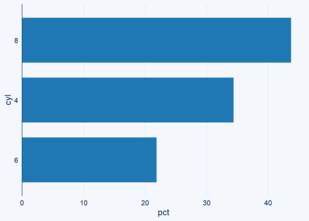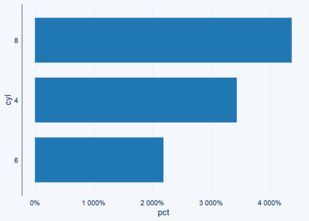Edited, memorised or added to reading queue
on 06-Jun-2024 (Thu)
Do you want BuboFlash to help you learning these things? Click here to log in or create user.
| status | not read | reprioritisations | ||
|---|---|---|---|---|
| last reprioritisation on | suggested re-reading day | |||
| started reading on | finished reading on |
Flashcard 7629619727628
| status | not learned | measured difficulty | 37% [default] | last interval [days] | |||
|---|---|---|---|---|---|---|---|
| repetition number in this series | 0 | memorised on | scheduled repetition | ||||
| scheduled repetition interval | last repetition or drill |
Parent (intermediate) annotation
Open itSequence classification involves predicting a class label for a given input sequence.
Original toplevel document (pdf)
cannot see any pdfsFlashcard 7629639650572
| status | not learned | measured difficulty | 37% [default] | last interval [days] | |||
|---|---|---|---|---|---|---|---|
| repetition number in this series | 0 | memorised on | scheduled repetition | ||||
| scheduled repetition interval | last repetition or drill |
Open it
pan> library(ggcharts) (p <- bar_chart(cyl, cyl, pct)) Copy Next, let’s try to change the axis labels to include a percentage sign using the ... p + scale_y_continuous(labels = scales::percent) Copy <span>
Flashcard 7629643058444
| status | not learned | measured difficulty | 37% [default] | last interval [days] | |||
|---|---|---|---|---|---|---|---|
| repetition number in this series | 0 | memorised on | scheduled repetition | ||||
| scheduled repetition interval | last repetition or drill |
Parent (intermediate) annotation
Open itNeural networks can also be used for nonlinear adaptive control in multi-agent systems
Original toplevel document (pdf)
cannot see any pdfs| status | not read | reprioritisations | ||
|---|---|---|---|---|
| last reprioritisation on | suggested re-reading day | |||
| started reading on | finished reading on |
Parent (intermediate) annotation
Open ithow realistic of an assumption is it? In general, it is completely unrealistic because there is likely to be confounding in most data we observe (causal structure shown in Figure 2.1). However, <span>we can make this assumption realistic by running randomized experiments, which force the treatment to not be caused by anything but a coin toss, so then we have the causal structure shown in Figure 2.2. We cover randomized experiments in greater depth in Chapter 5. <span>
Original toplevel document (pdf)
cannot see any pdfs| status | not read | reprioritisations | ||
|---|---|---|---|---|
| last reprioritisation on | suggested re-reading day | |||
| started reading on | finished reading on |
Parent (intermediate) annotation
Open itTruncated Backpropagation Through Time, or TBPTT, is a modified version of the BPTT training algorithm for recurrent neural networks where the sequence is processed one time step at a time and periodically an update is performed back for a fixed number of time steps
Original toplevel document (pdf)
cannot see any pdfs| status | not read | reprioritisations | ||
|---|---|---|---|---|
| last reprioritisation on | suggested re-reading day | |||
| started reading on | finished reading on |
Parent (intermediate) annotation
Open itRegular Bayesian networks are purely statistical models, so we can only talk about the flow of association in Bayesian networks. Association still flows in exactly the same way in Bayesian networks as it does in causal graphs, though. In both, association flows along chains and forks, unless a node is conditioned on. And in both, a collider blocks the flow of association, unless it is conditioned on. Combining these building blocks, we get how association flows in general DAGs. We can tell if two nodes are not associated (no association flows between them) by whether or not they are
Original toplevel document (pdf)
cannot see any pdfsFlashcard 7629760761100
| status | not learned | measured difficulty | 37% [default] | last interval [days] | |||
|---|---|---|---|---|---|---|---|
| repetition number in this series | 0 | memorised on | scheduled repetition | ||||
| scheduled repetition interval | last repetition or drill |
Parent (intermediate) annotation
Open itWhen we say “estimation,” we are referring to the process of moving from a statistical estimand to an estimate
Original toplevel document (pdf)
cannot see any pdfsFlashcard 7629767314700
| status | not learned | measured difficulty | 37% [default] | last interval [days] | |||
|---|---|---|---|---|---|---|---|
| repetition number in this series | 0 | memorised on | scheduled repetition | ||||
| scheduled repetition interval | last repetition or drill |
Parent (intermediate) annotation
Open itThe graph with edges removed is known as the manipulated graph
Original toplevel document (pdf)
cannot see any pdfsFlashcard 7629770984716
| status | not learned | measured difficulty | 37% [default] | last interval [days] | |||
|---|---|---|---|---|---|---|---|
| repetition number in this series | 0 | memorised on | scheduled repetition | ||||
| scheduled repetition interval | last repetition or drill |
Parent (intermediate) annotation
Open itconsistency encompasses the assumption that is sometimes referred to as “no multiple versions of treatment.”
Original toplevel document (pdf)
cannot see any pdfs| status | not read | reprioritisations | ||
|---|---|---|---|---|
| last reprioritisation on | suggested re-reading day | |||
| started reading on | finished reading on |
| status | not read | reprioritisations | ||
|---|---|---|---|---|
| last reprioritisation on | suggested re-reading day | |||
| started reading on | finished reading on |
| status | not read | reprioritisations | ||
|---|---|---|---|---|
| last reprioritisation on | suggested re-reading day | |||
| started reading on | finished reading on |
| status | not read | reprioritisations | ||
|---|---|---|---|---|
| last reprioritisation on | suggested re-reading day | |||
| started reading on | finished reading on |
| status | not read | reprioritisations | ||
|---|---|---|---|---|
| last reprioritisation on | suggested re-reading day | |||
| started reading on | finished reading on |
| status | not read | reprioritisations | ||
|---|---|---|---|---|
| last reprioritisation on | suggested re-reading day | |||
| started reading on | finished reading on |

